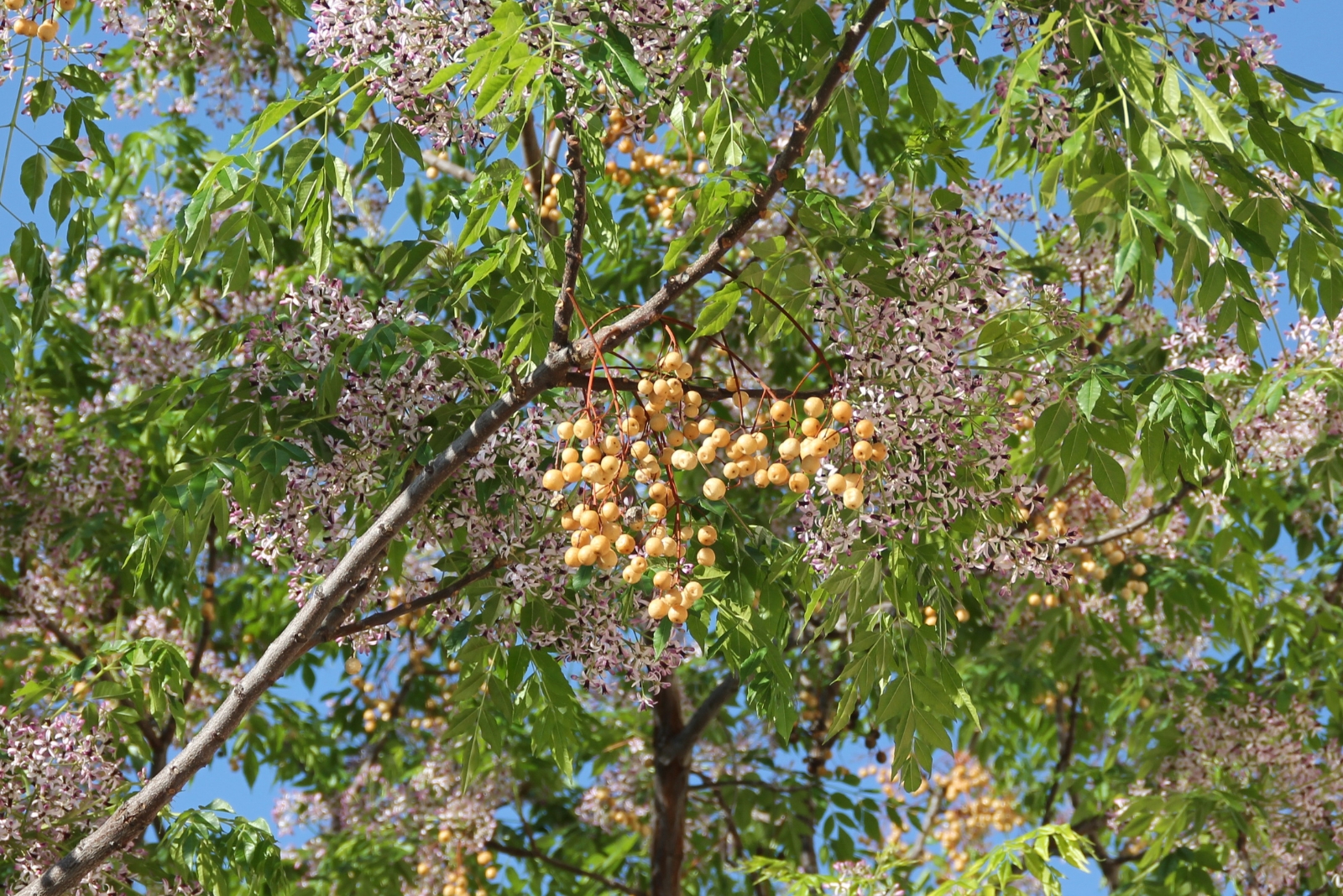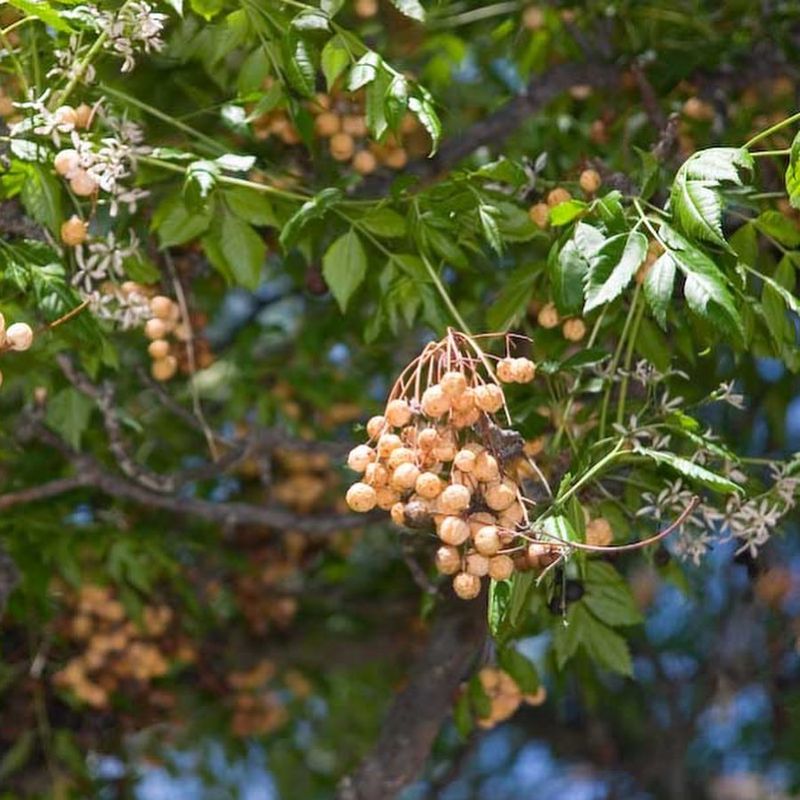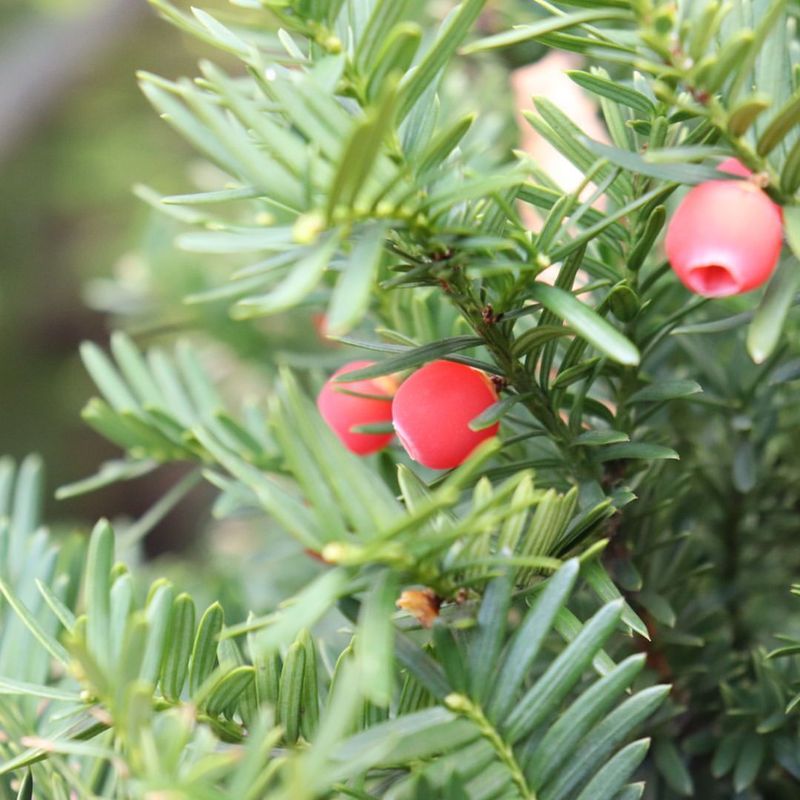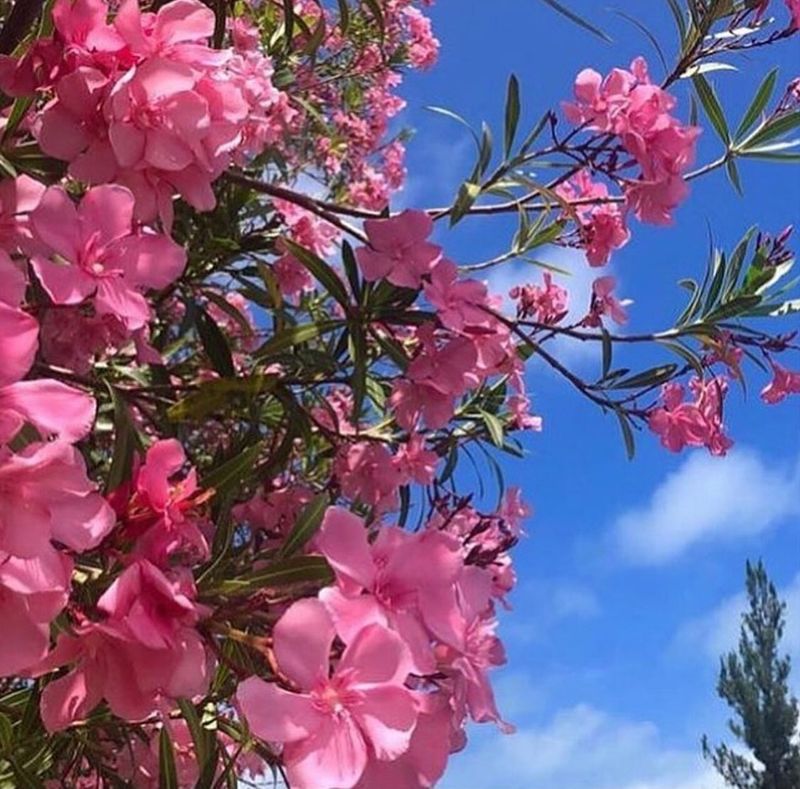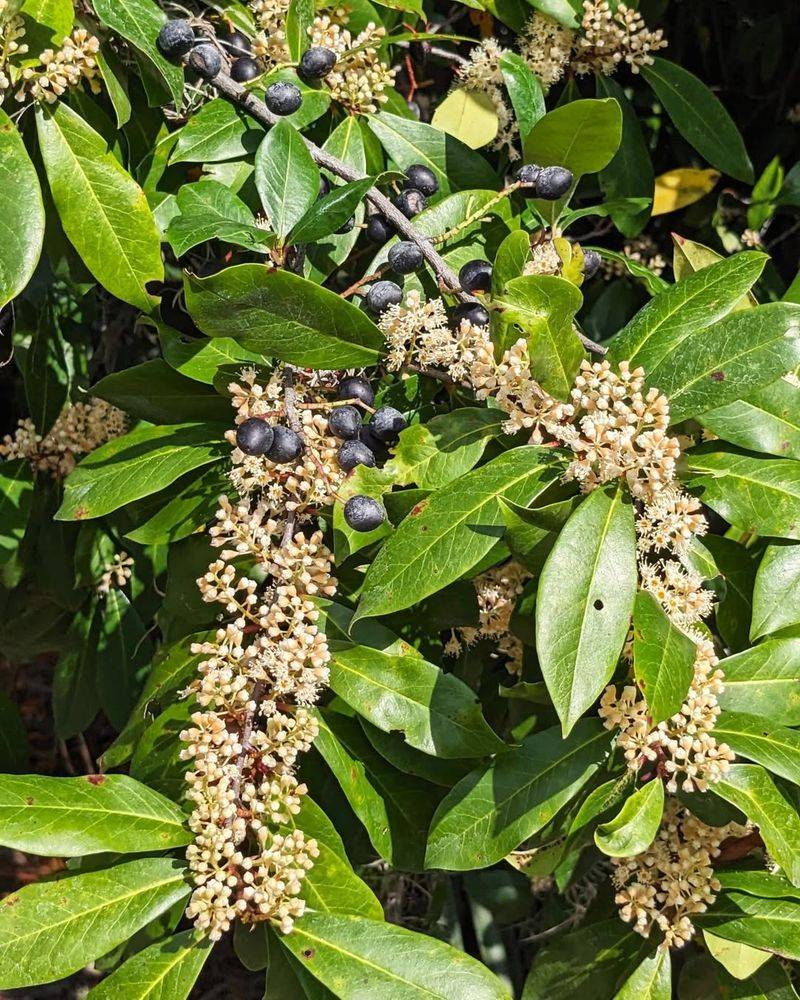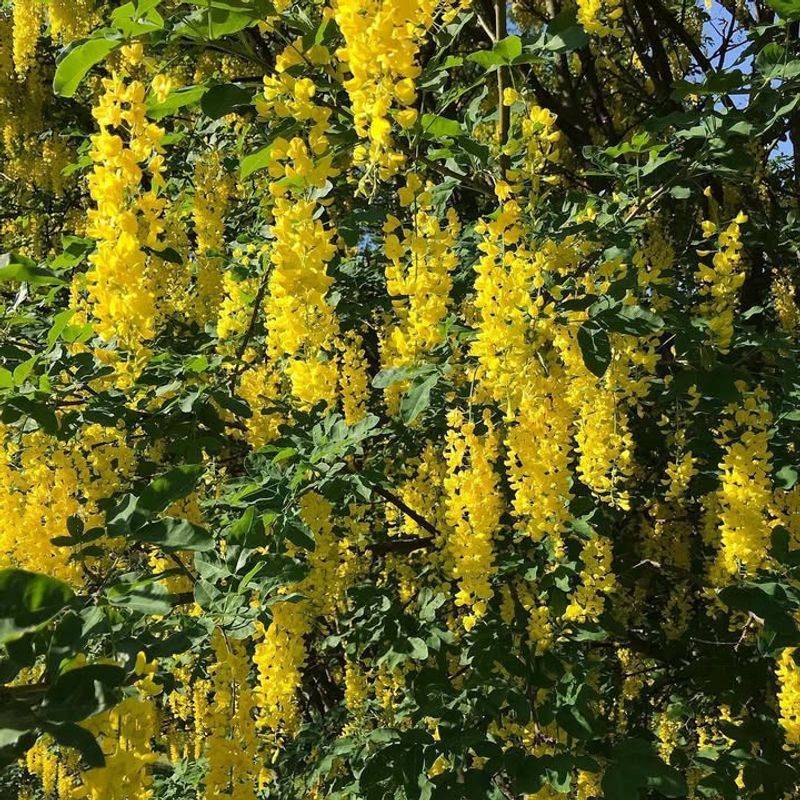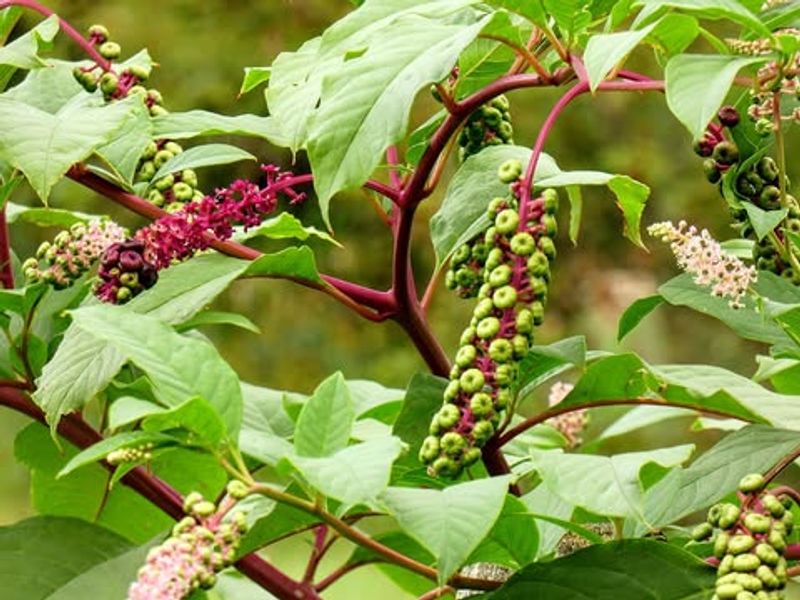Arkansas landscapes can be gorgeous, but a few trees bring far more problems than benefits. I’ve watched some of them cause issues for pets, soil, and even nearby plants.
They seem harmless at first glance, which makes them tricky. Learning which ones to skip can save your yard from a whole lot of stress down the road.
1. Chinaberry
With its pretty purple flowers and yellow berries, the chinaberry might look harmless, but it’s extremely dangerous. Every part of this tree contains toxins that affect the nervous system.
Children sometimes mistake the berries for snacks, which can lead to emergency room visits. Arkansas homeowners should remove these trees immediately if they find them on their property.
Birds can spread the seeds easily, making chinaberry trees invasive and hard to control once established in your neighborhood.
2. Yew
Yew trees are popular for landscaping because they stay green all year and can be trimmed into neat shapes. But these evergreens hide a deadly secret in their needles and seeds.
Just a small handful of yew needles contains enough poison to harm a person or animal. Many Arkansas gardeners don’t realize how dangerous these attractive shrubs can be.
The red berries look tempting to kids, and even dried clippings remain toxic, so yard waste needs careful disposal.
3. Oleander
Oleander bushes bloom with gorgeous pink, white, or red flowers that brighten up any Arkansas yard. Unfortunately, every single part of this plant contains cardiac glycosides that affect the heart.
People have gotten sick just from using oleander sticks to roast marshmallows over a campfire. The smoke, leaves, flowers, and stems all pose serious risks.
Even honey made from oleander nectar can be dangerous, so keep these beautiful but hazardous plants away from your home completely.
4. Horse Chestnut
Horse chestnut trees produce spiky green balls that split open to reveal shiny brown nuts that look like buckeyes. Kids often collect these attractive seeds without knowing the danger.
The nuts contain a compound called aesculin that causes nausea and muscle weakness. In Arkansas, these trees sometimes appear in older neighborhoods where they were planted decades ago.
Squirrels can eat the nuts safely, but humans and most pets cannot, so raking up fallen chestnuts becomes an important safety task each fall.
5. Cherry Laurel
Cherry laurel makes a popular privacy hedge in Arkansas because it grows thick and stays green year-round. But the leaves and berries contain cyanogenic glycosides that release cyanide when chewed.
Livestock and pets sometimes nibble on the attractive glossy leaves with serious consequences. The berries look similar to edible cherries but are definitely not safe to eat.
Even wilted leaves become more concentrated with toxins, making fallen branches especially dangerous if animals find them in your yard or compost pile.
6. Buckeye
Buckeye trees are native to Arkansas and produce seeds that people traditionally carry for good luck. However, the shiny brown nuts contain glycosides that make them unsafe to eat raw.
The leaves, bark, and especially the seeds can cause serious stomach upset and muscle problems. Children love collecting the smooth, attractive nuts but should never put them in their mouths.
Some Native American tribes learned to process buckeyes through multiple boilings to make them safe, but modern families should simply avoid eating them altogether.
7. Golden Chain Tree
Golden chain trees bloom with stunning yellow flower clusters that hang down like natural decorations. These beautiful displays hide a dangerous secret in their seeds and flowers.
The entire tree contains cytisine, which affects the nervous system and causes breathing problems. Arkansas gardeners who plant these ornamental trees should watch children and pets carefully during blooming season.
The seeds develop in pods that look like pea pods, and kids sometimes open them out of curiosity, which puts them at risk of exposure.
8. Pokeweed
Pokeweed grows wild throughout Arkansas and can reach tree-like sizes with thick stalks and bright purple berries. The roots, stems, and unripe berries are especially toxic to humans and animals.
Some people traditionally cooked young poke leaves as greens, but improper preparation leads to poisoning. The berries stain skin and clothes with a deep purple juice that also contains harmful compounds.
Birds eat the berries and spread seeds everywhere, so pokeweed pops up in yards constantly and requires regular removal efforts.
9. Poison Sumac
Poison sumac grows in wet areas of Arkansas and causes worse skin reactions than poison ivy or poison oak. The leaves, stems, and berries all contain urushiol oil that triggers painful rashes.
Many people can’t identify poison sumac and accidentally touch it while hiking or clearing land. The white berries hang in clusters and help distinguish it from safe sumac varieties with red berries.
Even smoke from burning poison sumac can cause serious breathing problems and internal reactions, so professional removal is strongly recommended for safety.
10. Manchineel
Manchineel trees rarely grow in Arkansas but deserve mention as one of the world’s most dangerous trees. Every part contains powerful toxins that burn skin on contact.
The small green fruits look like apples but cause immediate mouth blistering and throat swelling. Standing under a manchineel during rain can result in painful skin burns from the sap.
While not a local concern for most Arkansas homeowners, travelers should know about this tree when visiting tropical areas where it grows naturally along coastlines.

